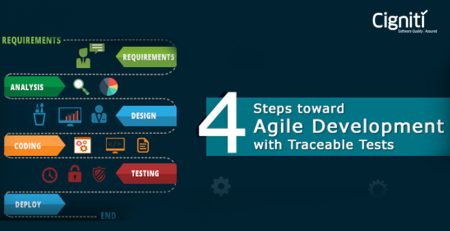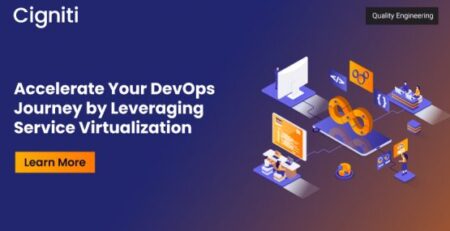Agile Maturity Model: How To Measure Agile Maturity
An agile maturity assessment is an exercise/tool to evaluate the current state of agile maturity and check on how successful the agile implementation is in an organization. The Agile maturity model captures the areas for improvement and establishes goals to upscale how your team works to adapt to business changes efficiently.
Agile adoption statistics show a significant growth of 86% in Agile adoption within software development teams. However, if you have a close look based on the research, the overwhelming percentage of organizations are not implementing the core agile principles and values correctly.
Many common barriers in terms of cultural clashes, absence of leadership participation, and organizational resistance to change are seen across the organizations that have remained unchanged for the past several years.
Why Assess the Agile Maturity of Your Company?
Understanding Agile maturity is an essential first step before you can plan for a transformation. In my journey of conducting maturity assessments for organizations, one of the key observations I have noticed is the inability to adapt to the market rapidly and ad-hoc changes in a productive and cost-efficient manner.
The common tendency of people is to take agility as an excuse for no planning, roadmap, discipline, or documentation. At times, managing the ad hoc changes may introduce an element of risk to the process integrity and performance of the project.
With such an uncertain future, building the Agile culture and mindset embedded with better understanding, collaboration, flexibility, and learning is necessary to meet the customer’s needs with improved quality and speed to market.
Hence, assessing and continually improving your company’s agile maturity is vital by evaluating the organization’s various focus areas and agile practices.
Challenges often seen in Agile Adoption
- Culture and mindset shifts are the most significant challenge, especially with higher levels of leadership.
- Org structure is a traditional hierarchy focused on delivery.
- When delivery pressure rises, the team’s ability to learn and mature in their agility is left behind.
- The command and control structures are so deeply rooted that molding individual mindsets takes patience and time.
- Executives often say ‘be agile’ but don’t budge on their expectations.
- Management / Leadership not willing to accept the change.
Let’s look at the 15th annual State of Agile Report, an annual survey conducted on Agile techniques and practices. This year’s report highlights the important milestones along Agile’s journey from its origins in software development teams to its current widescale enterprise adoption.
Source- https://digital.ai/resource-center/analyst-reports/state-of-agile-report
The key challenges organizations face when adopting Agile have remained largely unchanged for the past several years. Challenges with organizational culture, resistance to change, and lack of support and skills continue to be problems.
Source- https://digital.ai/resource-center/analyst-reports/state-of-agile-report
Based on the survey, the Agile Coaching Report 2022 highlights the challenges noticed across the Agile practices and techniques mentioned below –
Source- State-Of-Agile-Coaching-Report-2022-Final.pdf
Agile Maturity Model- Problems & Challenges
Organizations’ demand to assess and evaluate projects in an agile state has been increasing considerably. There is a critical need to assist/guide organizations in improving their agile capability and providing a transformation roadmap to achieve scaled agility.
Agile concepts are usually misinterpreted, or “agile” is used as an excuse for being undisciplined by some organizations. However, we often see significant concerns about identifying how far the organizations are “agile” and how they can improve.
The maturity level for one of the sample projects shown below depicts the current agility state of a project with a maturity rating of 3.16. The Agile process was considered a separate sub-focus area instead of an all-inclusive Agile framework model. The Agile process is comprised of generic questions on Agile practices, product backlogs, and sprint ceremonies.
| Focus Areas | Current Rating |
| Governance | 1.82 |
| Configuration Management | 2.58 |
| Test Metrics | 0.5 |
| Agile Process | 3.16 |
Some common challenges were a lack of communication, quality measurement, changing requirements, and continuous testing. The current model could not understand the root cause and define the appropriate transformation roadmap.
A few issues observed in the current approach were that some of the vital areas mentioned below were ignored as a part of the Agile assessment.
- How is the Leadership commitment to learning culture in the organization?
- Does the team continuously improve the flow of value as a part of Team collaboration?
- Are people organized into cross-functional Agile teams as a part of cross-skill Agile teams?
- Does the team understand the benefits of maintaining a healthy backlog?
- How is the Engineering maturity- built in Quality?
- How is the delivery maturity?
- Does the team Inspect and Adapt?
The existing approach does not seem to cover all the principles and values for gauging the right agility state and defining the future roadmap and transformation approach to bring about continuous improvement.
The right analysis and benchmarking to derive the agile state of an organization has always been a challenge. The different implementation levels and maturity across every focus area are missing to derive the right agility state of the organization.
Thus, revamping and revising the pillars and sub-focus areas in the Agile Maturity Assessment model became essential.
Cigniti’s Agile Maturity Assessment Model
Cigniti’s new Agile framework has been developed to bring about engineering excellence, demand flow, and ownership and move the project to product. The Agile Maturity assessment is based on adopting Agile values, principles, concepts, and artifacts.
Our new assessment approach will help in benchmarking the Agile engineering process and bring about a continuous improvement in the entire workflow from start to finish.
The Agile New Framework is an end-to-end framework built on best practices and industry-standard models, which helps assess the projects based on the Agile fundamental principles, processes, practices, tools, and skills to transform the organization to a high maturity ‘Scale Agile’ state.
Cigniti’s new Agile framework is built on the 10 defined Agile pillars to assess the overall maturity of the Agile practices implemented, as shown below.
| S. No | Agile Pillars | Description |
| 1 | Culture and Mindset | Leadership commitment, Agile mindset, and Learning |
| 2 | Agile Teams | Agile organizational structure, Team collaboration, and Cross skills |
| 3 | Backlog Management | Product backlog, Sprint backlog, Story quality/health |
| 4 | Planning & Commitment | Agile Ceremonies and Team Commitment |
| 5 | Agile Practices | Agile Process, Agile Governance, Tools and Measurement, Agile Metrics |
| 6 | Engineering Maturity | Built in Quality |
| 7 | Focus on Automation | Automation Strategy, Reporting and Maintenance |
| 8 | Delivery Maturity | Agile development, continuous testing in CI/CD pipeline, Continuous Security, and Continuous Feedback |
| 9 | Continuous Improvement | Plan and Execute improvement and Customer Centricity/Satisfaction |
| 10 | Inspect and Adapt | Continuous Feedback and Retrospectives |
Sub focus areas across each pillar
Assessment Questionnaire
Now let’s look at how to derive the organization’s maturity level. A set of questions covering the key aspects across each agile pillar has been defined to derive the agility health of an organization.
The implementation level is marked across each question based on the state in which the project lies, as mentioned in the implementation level description.
| Score | Implementation Level | Implementation Levels Description |
| 5 | Expert | Never Misses, Excel at it, Part of basic culture, never fails, Doing for longtime |
| 4 | Fully Implemented | Always performed, Audited, rarely missed, Metric driven, Mandatory |
| 3 | Largely Implemented | Most of the Time, Process driven, Needs little maintenance, Almost there |
| 2 | Minimally Implemented | Sometimes, rarely done, people driven, not audited |
| 1 | Not Implemented | Not performed, needs to be included |
| NA | Not Applicable | Out of scope, Not Sure |
Cigniti’s detailed questionnaire has 480 points of inquiry, which collates responses and scores the ‘10 Agile pillars’.
Analysis & Outcome
Snapshot of sample maturity and pillar-wise break-up below
| Agile Pillars | Current Maturity |
| Culture and Mindset | 4.2 |
| Agile Teams | 4.3 |
| Backlog Management | 5 |
| Planning & Commitment | 4 |
| Agile Practices | 3.7 |
| Engineering Maturity | 1.4 |
| Focus on Automation | 4.1 |
| Delivery Maturity | 4.1 |
| Continuous Improvement | 1 |
| Inspect and Adapt | 3.7 |
The average maturity rating and overall maturity level are derived, and the project is stated as Adhoc Agile, Doing Agile, Being Agile, Excel Agile, or Fully Agile based on the evaluation performed on the project’s current state.
The Agile pillars for the new framework address all the focus areas, help with consistent delivery across the distributed teams, and adapt to the recent changes efficiently.
The key deliverables based on the assessment will be the current gaps and recommendations, overall maturity rating, recommendations, and roadmap for improving Agile maturity and quality, efficiency, and predictability in delivering value.
Conclusion
Measure the state of agility and discover the strengths and areas to improve. Grow the maturity of the individuals and teams and change your organization’s culture. Assessments will be more beneficial and provide good outcomes only when the teams follow key essentials such as culture and mindset, effective communication, the right attitude, willingness to change, and team collaboration.
Improve your ability to adapt to change. Get insights on how to optimize your processes and tools. If you wish to know the agile state of your organization, then you could do a quick assessment using the same model that has been described above.
Need help? Consult our Advisory & Transformation Services domain experts to learn more about measuring and improving agility using Cigniti’s Agile Maturity Model.










Leave a Reply